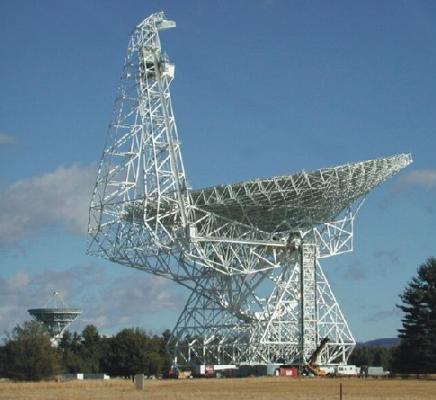Pioneering observations with the National Science Foundation's giant Robert C. Byrd Green Bank Telescope (GBT) have given astronomers a new tool for mapping large cosmic structures. The new tool promises to provide valuable clues about the nature of the mysterious "dark energy" believed to constitute nearly three-fourths of the mass and energy of the Universe.
|

Robert C. Byrd Green Bank Telescope
CREDIT: NRAO/AUI/NSF
|
Dark energy is the label scientists have given to what is causing the Universe to expand at an accelerating rate. While the acceleration was discovered in 1998, its cause remains unknown. Physicists have advanced competing theories to explain the acceleration, and believe the best way to test those theories is to precisely measure large-scale cosmic structures.
Sound waves in the matter-energy soup of the extremely early Universe are thought to have left detectable imprints on the large-scale distribution of galaxies in the Universe. The researchers developed a way to measure such imprints by observing the radio emission of hydrogen gas. Their technique, called intensity mapping, when applied to greater areas of the Universe, could reveal how such large-scale structure has changed over the last few billion years, giving insight into which theory of dark energy is the most accurate.
See the website for more details. http://www.nrao.edu/pr/2010/highzhi/(sy)
|
